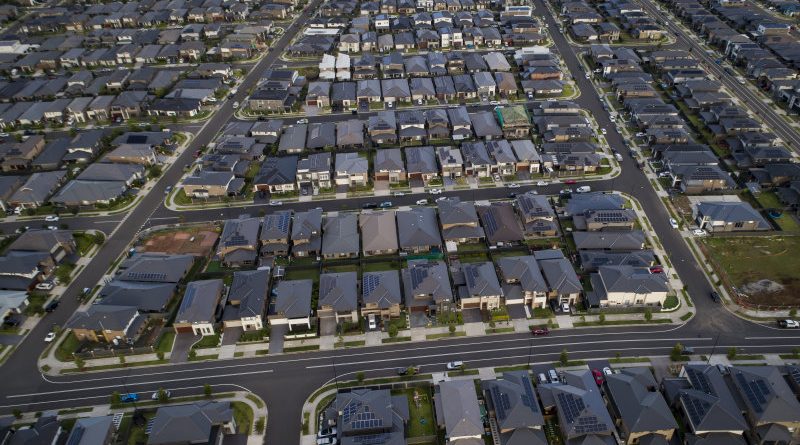Major banks prepare for financial stress and bad debts
Save articles for later
Add articles to your saved list and come back to them any time.
Large savings buffers and low unemployment appear so far to have prevented a major lift in the number of borrowers falling behind on their loan repayments, the latest round of bank results suggest.
But bankers and analysts say the situation is unlikely to last, as the sector gears up for an increase in financial stress caused by soaring interest rates and cost-of-living pressures.
Bank results showed an uptick in some mortgage arrears, but bad debts remained low overall.Credit: Wolter Peeters
An expected increase in bad debts is one of the key risks on the radar for bank investors. Markets are betting that rising interest rates will ultimately hit bank profits, by causing an increase in defaults by struggling households and businesses.
But although it is early days, this month’s round of major bank profit results showed little change in the proportion of customers struggling with repayments, while suggesting many consumers still had large savings buffers to draw on.
In the six months to March, several banks showed a small increase in customers missing a repayment, but in the case of lending giant Westpac, 90-day mortgage delinquencies edged down.
Across the big four, PwC analysis found that provisions for bad debts climbed by 6.1 per cent in the half, compared with a year earlier. It said the major banks had a total of more than $20 billion in provisions set aside for credit losses.
But PwC said the credit provisions were more a reflection of the banks’ expectations that the economy will deteriorate, as opposed to actual cases banks saw of customers falling into stress.
Managing director at White Funds Management Angus Gluskie said the pain from rising interest rates was bound to hit borrowers eventually but, so far, there were few signs of it in banks’ results.
“I think what surprised us in these bank results was the fact that the bad debt charges were almost negligible in the scheme of things,” he said.
“It just looks incredibly benign. What it’s telling us is that consumers so far have had reasonable resources which they have been able to draw upon, even as interest rates have risen.”
Westpac says mortgage “buffers”, which measure how customers are ahead on their repayments, are largely unchanged.Credit: Natalie Boog
Westpac, for example, reported that mortgage “buffers”, which measure how customers are ahead on their repayments, were “largely unchanged” in the half. The amount held in mortgage offset balances also edged up in the half by $1 billion, to $54 billion.
ANZ Bank chief executive Shayne Elliott said at its results earlier this month that the customers feeling the most distress were not generally those with mortgages, but renters and people in lower paid or less stable employment.
“Our experience is people who are hurting the most at the moment, sadly, are those that are less likely to own their own home. They’re more likely to be renters. They’re more likely to be in less stable employment, and they’re more likely to be lower paid,” Elliott said.
“What’s been counterintuitive is that our housing customers … seem to be doing really OK still.”
The big question for many investors is how long this situation can continue. Banks acknowledge that average figures do not tell the whole story because the effects of rising interest rates have been highly uneven. Lenders indicated they think there will be a rise in mortgage delinquencies – with the next six to 12 months seen as a tougher period for the economy.
Opal Capital chief investment officer Omkar Joshi said recent bank results suggested most households’ savings buffers remained strong, and it was still early in the economic cycle for banks to be experiencing higher bad debt charges.
Joshi said the prospect of higher bad debts remained a “pretty material risk” for banks over the next two years, but he stressed banks would work with customers to minimise losses on mortgages.
“I think it’s still very early in the piece to start seeing these problems. Most of the banks are leveraged to housing, but that’s not the first thing that will come under pressure, necessarily,” Joshi said.
The Business Briefing newsletter delivers major stories, exclusive coverage and expert opinion. Sign up to get it every weekday morning.
Most Viewed in Business
From our partners
Source: Read Full Article



